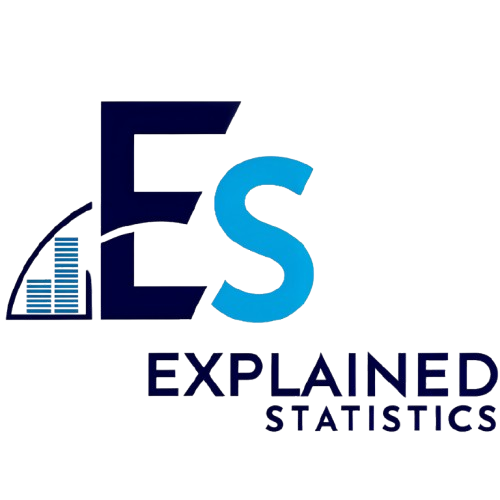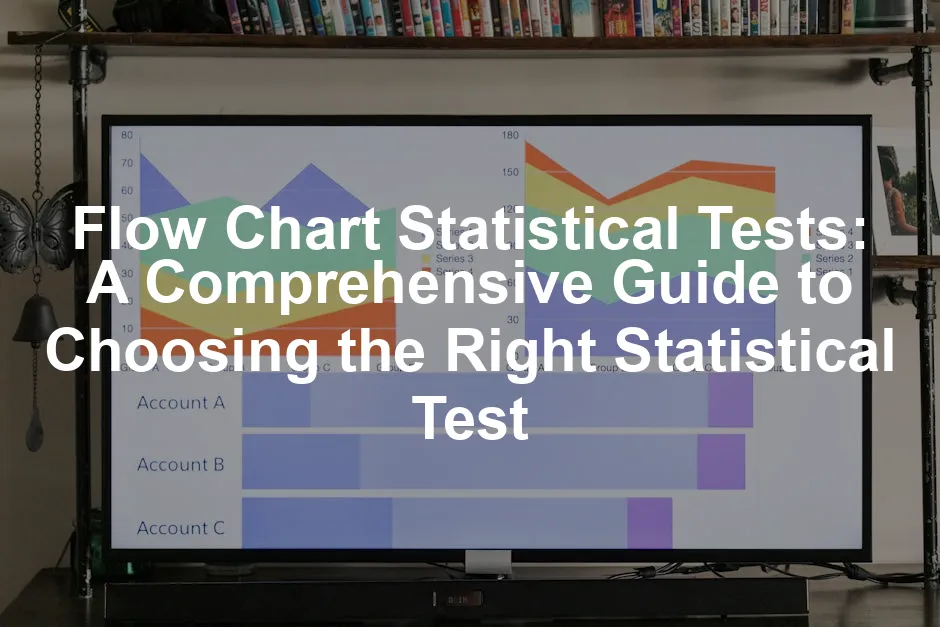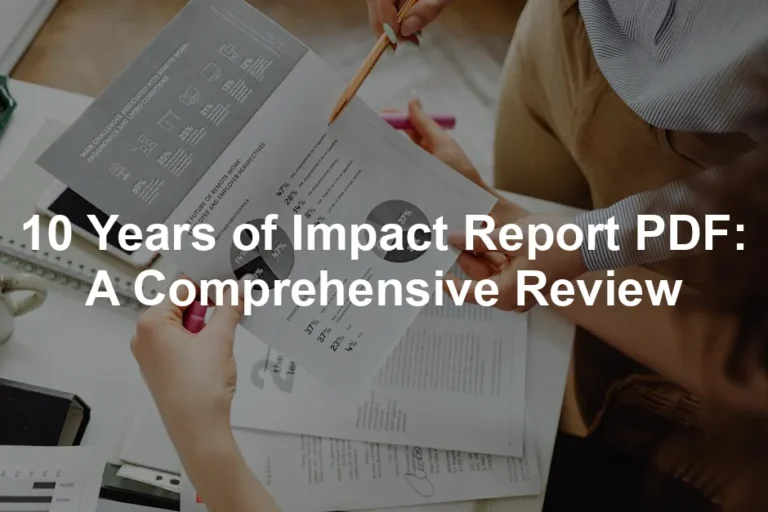Introduction
Selecting the right statistical test is more than just a research formality; it’s the backbone of valid conclusions. Imagine throwing darts blindfolded—without the right test, your results might miss the target completely. The wrong choice can lead to inaccurate findings, which, let’s be honest, can be a researcher’s worst nightmare.
Statistical tests are designed to help us determine if the patterns we observe in data are real or simply due to chance. However, with a plethora of tests available, figuring out which one to use can feel like navigating through a dense forest without a map.
Enter flow charts! These nifty tools simplify the decision-making process, guiding researchers through a series of questions about their data. They clarify which statistical test fits best based on the nature of the data you have. Flow charts break down complex decisions into easy-to-follow steps.
Speaking of flow charts, if you want to create your own, consider using some Flow Chart Templates for Data Analysis. These templates can help streamline your workflow and make your data analysis process more efficient!
The objective of this article is to provide a detailed guide on using flow charts for statistical tests. By the end, you’ll feel empowered to approach your statistical analysis with confidence. Whether you’re a seasoned researcher or just starting, this guide aims to illuminate the path to selecting the right test.
So, grab your statistical toolkit, and let’s embark on this enlightening journey together! You’ll soon discover that with the right flow chart, choosing a statistical test can be straightforward and even a bit fun.

Understanding Statistical Tests
What is a Statistical Test?
Statistical tests are essential tools in the researcher’s toolkit. They help evaluate hypotheses in a structured manner. At the core of this process are two hypotheses: the null hypothesis and the alternative hypothesis. The null hypothesis posits that there is no effect or difference between groups, while the alternative suggests that there is a significant effect or difference.
When researchers gather data, they apply statistical tests to see if their observations deviate from what the null hypothesis predicts. This is done by calculating a test statistic, which quantifies how far the observed data lies from the expected range under the null hypothesis.
But wait, there’s more! The magic ingredient in this process is the p-value. This value indicates the probability of obtaining the observed data if the null hypothesis were true. A low p-value (typically less than 0.05) suggests that we can reject the null hypothesis, leading us to accept the alternative hypothesis.
If you want to dive deeper into the world of statistics, consider reading “The Art of Statistics: Learning from Data” by David Spiegelhalter. This book beautifully explains how to make sense of data and the statistical principles behind it, turning complex concepts into easily digestible information!
In essence, statistical tests bridge the gap between raw data and meaningful conclusions, allowing researchers to make data-driven decisions based on evidence rather than guesswork. Understanding these concepts is crucial when selecting the appropriate statistical test, setting the stage for accurate and reliable research outcomes.
Types of Statistical Tests
When faced with data analysis, the selection of a statistical test can feel like choosing a favorite ice cream flavor—so many options, each with its unique twist! To make this selection easier, we can categorize tests into two main types: parametric and non-parametric. Buckle up as we explore these categories and their key examples!
Parametric Tests
Parametric tests come with a set of assumptions about the data. They require that the data is normally distributed and that the variances are equal across groups. If your data meets these conditions, parametric tests can unleash their full power, providing more precise results.
Common examples of parametric tests include:
- T-tests: These bad boys are perfect for comparing the means of two groups. There are two varieties: the independent t-test (for comparing different groups) and the paired t-test (for comparing the same group at two different times). Imagine testing two teaching methods; the t-test can help determine which method leads to higher average scores!
- ANOVA (Analysis of Variance): When you want to compare the means among three or more groups, ANOVA is your go-to. It helps you understand if at least one group mean differs from the others, like comparing the effectiveness of three different diets on weight loss.
- Regression Analysis: This technique predicts the value of a dependent variable based on one or more independent variables. For example, predicting house prices based on square footage, number of bedrooms, and location is a classic use case for regression analysis.
In summary, parametric tests are potent tools when your data meets their assumptions. They can provide clearer insights and are often more powerful than their non-parametric counterparts. If you are looking for a comprehensive guide on practical applications, check out “Statistics for Data Science” by James D. Miller, which covers essential concepts and techniques for analyzing data effectively.

Non-Parametric Tests
Non-parametric tests are the rebels of the statistical world. They don’t assume a normal distribution, making them ideal when your data doesn’t play by the usual rules. These tests are particularly useful for ordinal data or when dealing with outliers that could skew results.
Here are a few popular non-parametric tests:
- Mann-Whitney U Test: This test compares two independent groups, similar to the independent t-test, but without the assumption of normality. If you’re curious about whether two different teaching methods yield different student performance, this test can provide the answer without the constraints of parametric assumptions.
- Kruskal-Wallis Test: An extension of the Mann-Whitney U test, the Kruskal-Wallis test is used for comparing three or more independent groups. If you want to compare test scores across multiple classrooms without worrying about the normal distribution, this test is your friend.
- Chi-Square Tests: This versatile test examines the relationship between categorical variables. It helps answer questions like, “Is there a link between gender and preference for a specific product?” Perfect for analyzing survey data, the Chi-square test can reveal interesting patterns.
Non-parametric tests may lack some of the power of parametric tests when conditions are met, but they shine in situations where assumptions are violated. When in doubt about your data’s distribution, non-parametric tests are a safe bet.
In conclusion, understanding the distinctions between parametric and non-parametric tests is crucial for effective data analysis. Whether you opt for the rigor of parametric tests or the flexibility of non-parametric options, the right choice can lead to meaningful insights from your data. So, take a moment to consider your data’s characteristics before diving into the statistical seas!

Step-by-Step Breakdown of the Flow Chart
To start your journey through the statistical testing maze, first, identify your variables. This crucial step distinguishes between independent and dependent variables.
Identify the Type of Variables
Independent Variables are the inputs or conditions you manipulate. Think of them as the brave explorers setting out for adventure. They can be:
- Categorical: These are groups or categories. Examples include gender (male, female) or treatment types (control, experimental).
- Continuous: These variables represent measurable quantities, like height or temperature. They’re the numbers that can take on an infinite range of values.
On the flip side, Dependent Variables are the outcomes you measure. They respond to the independent variables. Like an audience reacting to the performance on stage, they can be:
- Nominal: Simple categories without order, such as types of fruit (apple, orange).
- Ordinal: These have a clear order, like ratings (poor, fair, good).
- Interval: Numeric scales where differences are meaningful, such as temperature in Celsius.
- Ratio: Similar to interval, but with an absolute zero point, such as weight or age.
Understanding the types of variables is critical. It lays the groundwork for determining the right statistical test. Misidentifying a variable could lead you down the wrong path, potentially yielding misleading results.

Determine the Number of Groups
Next, let’s figure out how many groups you’re dealing with. This step is essential for choosing the proper test.
Two Groups: If you’re comparing two distinct groups, you have a couple of options. For normally distributed data, consider using an Independent T-Test to compare means. If your data is more rebellious and doesn’t follow normal distribution, the Mann-Whitney U Test is your go-to non-parametric alternative.
More Than Two Groups: When your research involves three or more groups, things get a bit more complex. Here, ANOVA (Analysis of Variance) shines. It allows you to determine if at least one group mean differs significantly from the others. For non-parametric data, the Kruskal-Wallis Test is a suitable option, ensuring you remain on the right statistical path.
Understanding how many groups you’re dealing with not only helps in choosing the right test, but also ensures that your analysis is robust and meaningful. If you want to delve deeper into the intricacies of statistical methods, consider “Statistical Methods for Psychology” by David C. Howell, which provides a thorough exploration of statistical techniques tailored for psychological research.
Assess the Assumptions
Finally, let’s address the assumptions underlying your chosen statistical tests. This step is like checking the weather before heading out—it can save you from unexpected surprises!
Common assumptions include:
- Normality: Many tests, especially parametric ones, assume that your data follows a normal distribution. If your data resembles a bell curve, you’re in good shape. If not, consider using a non-parametric test.
- Homogeneity of Variances: This assumption states that different groups should have similar variances. To test this, use Levene’s Test. If your variances are unequal, it might be wise to opt for a robust alternative.
So, what should you do if one of these assumptions doesn’t hold? Fear not! Non-parametric tests are your safety net. They don’t require the same stringent assumptions. For example, if your data fails the normality test, the Mann-Whitney U Test or Kruskal-Wallis Test can still provide valuable insights without dropping the ball.
In summary, assessing the assumptions of your statistical tests ensures you’re not driving blind. By confirming that your data meets these criteria, you can confidently proceed, knowing you’re on the right track. Embrace the power of assumptions—they’re your compass in the world of statistical testing!

Choosing the Appropriate Test
When it comes to statistical analysis, selecting the right test is crucial. Each statistical test has specific conditions under which it performs best. Let’s break down some common tests and their requirements.
- Independent T-Test: Use this test when comparing the means of two independent groups. For instance, if you want to see if students who study with music perform differently than those who study in silence, this is your go-to. The key conditions are that data should be normally distributed and variances in both groups should be equal.
- Paired T-Test: This test compares two related groups, such as measurements taken before and after a treatment. It’s like comparing your test scores before and after cramming the night before! The data should be normally distributed, and you should have continuous measurements.
- ANOVA (Analysis of Variance): When you have three or more groups to compare, ANOVA steps in. Suppose you’re testing three different teaching methods to see which yields the best scores. This test assumes normal distribution and equal variances across groups.
- Mann-Whitney U Test: This non-parametric test compares two independent groups when the assumptions of the t-test aren’t met. If your data is skewed or ordinal, this is your friend. It’s useful for comparing different treatments when normality is questionable.
- Kruskal-Wallis Test: This is the non-parametric counterpart to ANOVA and is used for comparing three or more groups. If you have ranks or ordinal data, this test will help you make sense of your results without the normality requirement.
- Chi-Square Test: Perfect for categorical data, this test assesses relationships between variables. For example, if you want to know if a preference for a product is linked to gender, this is the way to go. The only caveat is that you need a sufficient sample size for reliable results.
By understanding these tests and their conditions, you can confidently select the appropriate statistical test for your analysis, ensuring your conclusions are sound and reliable. No more guesswork—just clear, informed decisions!

Emerging Trends in Statistical Analysis
Statistical analysis is evolving faster than a cat chasing a laser pointer! Recent trends and advances are reshaping how researchers approach data interpretation. Let’s take a look at some of the most exciting developments in this realm.
One standout trend is the integration of machine learning with traditional statistical techniques. Researchers are increasingly utilizing machine learning algorithms to enhance predictive accuracy and uncover hidden patterns in data. These methods can analyze vast datasets quickly, offering insights that traditional statistical tests might miss. It’s like giving your statistical toolbox an upgrade with state-of-the-art gadgets. For instance, machine learning can help identify complex relationships between variables, making it easier to model real-world scenarios. If you’re looking for a good starting point, check out “Machine Learning for Statistical Modeling” by David Barber, which covers the intersection of these powerful fields!
Bayesian approaches are also gaining traction. Unlike classical statistics, which relies heavily on p-values and null hypothesis testing, Bayesian methods allow for a more nuanced interpretation of results. By incorporating prior knowledge and evidence, Bayesian statistics provide a framework for updating beliefs as new data becomes available. This flexibility is particularly valuable in fields like epidemiology or finance, where conditions can change rapidly. It’s akin to swapping your old map for a GPS that adjusts in real-time!

Another vital trend is the growing emphasis on reproducibility and transparency in statistical research. In recent years, the scientific community has recognized the importance of sharing data and methodologies to ensure that studies can be replicated. This movement aims to combat the “reproducibility crisis,” where many research findings cannot be reproduced in subsequent studies. Journals are increasingly requiring authors to provide access to datasets and code, allowing others to verify results. This push for transparency strengthens the validity of research and fosters trust among scientists and the public alike.
Moreover, researchers are adopting open science practices, encouraging collaboration and data sharing to enhance scientific progress. Platforms that facilitate sharing datasets and methodologies are becoming more popular, enabling researchers to build on each other’s work rather than reinventing the wheel. This communal approach is like a potluck dinner where everyone brings their unique dish to create a feast of knowledge!
Lastly, there’s a noticeable shift toward causal inference techniques in observational studies. Traditional statistical methods often struggle to establish cause-and-effect relationships. However, newer approaches, such as directed acyclic graphs (DAGs) and instrumental variables, help clarify these relationships, providing researchers with a clearer understanding of how variables interact. This shift is crucial, especially in fields like social sciences and healthcare, where understanding causal mechanisms can lead to better interventions. To understand these techniques better, you might want to grab “Bayesian Statistics: An Introduction” by Peter M. Lee, which provides a comprehensive overview of these methods.
In summary, the landscape of statistical analysis is undergoing a transformation. The integration of machine learning, the rise of Bayesian approaches, the emphasis on reproducibility, and the focus on causal inference techniques are all setting the stage for a more robust and insightful future in research. With these advancements, researchers can tackle complex questions with greater confidence and accuracy, paving the way for new discoveries and innovations.
Conclusion
Choosing the right statistical test isn’t just a step in the research process; it’s the foundation for drawing valid conclusions. Selecting the wrong test can lead to misleading results, casting a shadow over an otherwise brilliant study. It’s like baking a cake without checking if the oven is hot enough—your final product might not rise to the occasion!
Flow charts are an invaluable resource for simplifying the statistical test selection process. These visual guides transform the daunting task of choosing a test into a straightforward journey. By following a series of questions about your data’s characteristics, flow charts help you identify the most appropriate statistical test quickly and efficiently. Imagine having a trusty map that guides you through the statistical wilderness—no more getting lost in the weeds!

Utilizing flow charts alongside best practices can significantly enhance your research endeavors. Start by clearly defining your research question and understanding the types of data you have. Then, consult the flow chart to pinpoint the right statistical test. This method not only streamlines your analysis but also increases the likelihood of achieving reliable results.
As you embark on your statistical adventures, remember to embrace these resources and methodologies. They will empower you to make informed decisions and navigate the complexities of statistical analysis confidently. So go ahead, put those flow charts to good use, and watch your research efforts flourish! And if you’re looking for a practical guide, consider “Statistics Done Wrong: The Woefully Complete Guide” by Alex Reinhart, which highlights common pitfalls in statistical analysis and how to avoid them!
FAQs
What are the main assumptions of statistical tests?
Statistical tests often rely on assumptions such as normality, independence of observations, and homogeneity of variance. Normality assumes that your data is distributed in a bell-curve shape. Independence means that the data points are not related to one another. Homogeneity of variance states that different groups should have similar variances. If these assumptions are violated, consider using non-parametric tests, which are more flexible.
What is the difference between parametric and non-parametric tests?
Parametric tests assume that data follows a specific distribution, usually normal, and are used for continuous data. Examples include t-tests and ANOVA. Non-parametric tests, on the other hand, do not make such assumptions and are suitable for ordinal or skewed data. They include tests like the Mann-Whitney U test and the Kruskal-Wallis test. The choice between the two often depends on the characteristics of your data.
How do I interpret p-values and test statistics?
A p-value indicates the probability of obtaining your observed results, or more extreme ones, if the null hypothesis is true. A low p-value (typically below 0.05) suggests strong evidence against the null hypothesis, indicating that you may reject it. Test statistics quantify the difference between your observed data and what is expected under the null hypothesis. Higher test statistics typically indicate a greater deviation from the null hypothesis.
When should I use a correlation test instead of regression analysis?
Use correlation tests when you’re interested in assessing the strength and direction of a relationship between two continuous variables without inferring causation. Regression analysis, however, is appropriate when you want to predict the value of a dependent variable based on one or more independent variables. For example, if you want to see how study hours influence test scores, regression analysis would provide a predictive model.
What resources are available for learning more about statistical tests?
Numerous resources exist for deepening your understanding of statistical tests. Consider books like “Practical Statistics for Data Scientists” or “The Art of Statistics” for foundational knowledge. Online courses on platforms like Coursera or edX offer structured learning experiences. Additionally, websites such as UCLA’s Statistical Consulting Group provide valuable guides on selecting and interpreting statistical tests.
Please let us know what you think about our content by leaving a comment down below!
Thank you for reading till here 🙂
For a comprehensive understanding of the selection process for statistical tests, check out this flow chart for statistical tests.
To deepen your knowledge of how independent variables differ from dependent variables, this article on identically distributed vs independent variables in statistics is highly recommended.
All images from Pexels




